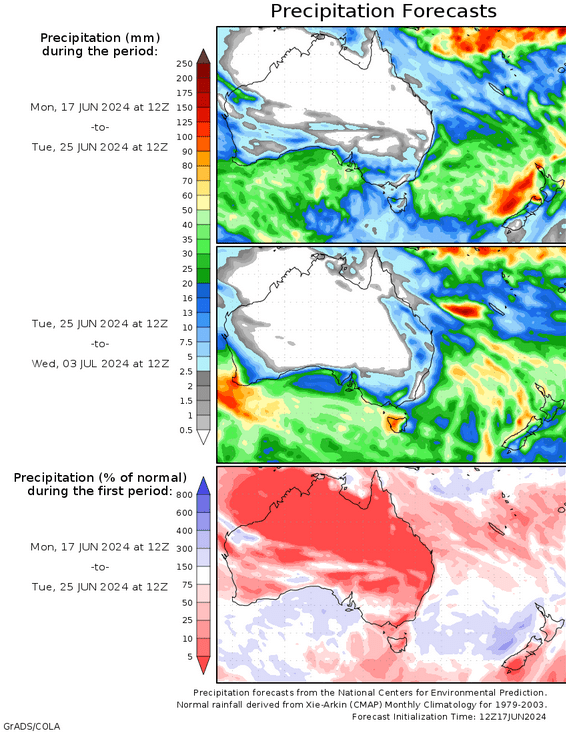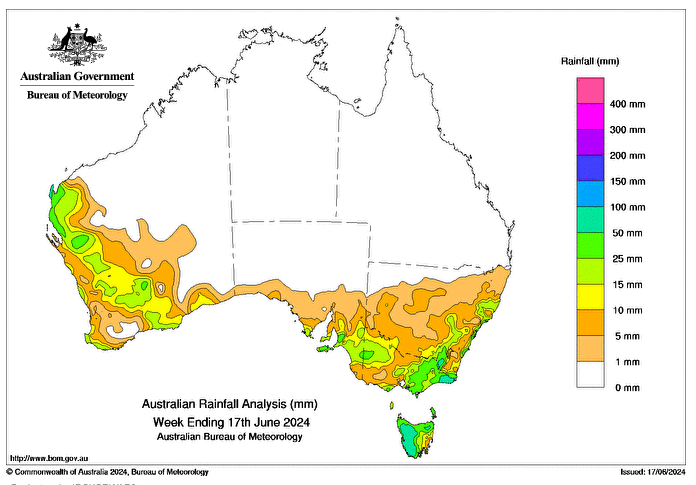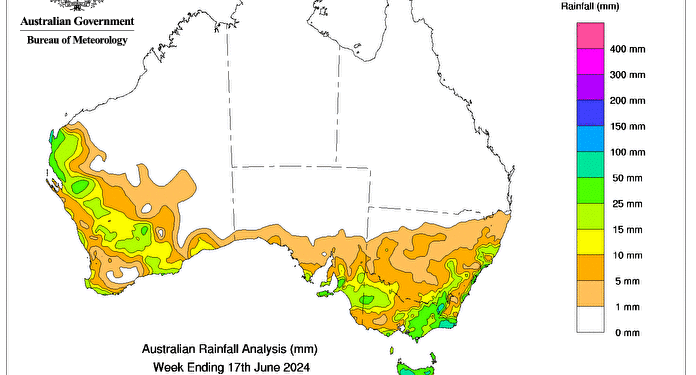A detailed overview of recent rainfall trends and totals across different regions of Australia
Throughout the past week, Australia experienced varied rainfall patterns across its diverse regions, influencing agricultural conditions from coast to coast. From tropical moisture sweeping across Western Australia to localized downpours in Tasmania and southeastern regions, the weather has had significant implications for farmers and agriculturalists alike.
In Western Australia, a steady stream of tropical moisture from the northwest to the southwest resulted in widespread showers. Areas such as Cowaramup saw substantial rainfall, with 55mm recorded in just 24 hours. Meanwhile, Tasmania, eastern Victoria, and southern New South Wales experienced heavy rainfall due to cold fronts, with some areas receiving weekly totals exceeding 50mm. This precipitation is crucial for agricultural activities in these typically drier regions.

A cut-off low over southeast South Australia and northwest Victoria brought additional rainfall, including a notable total of 64mm in Hahndorf, South Australia. Simultaneously, a large low-pressure system in the Tasman Sea affected the southeast coast, contributing to rainfall ranging from 10mm to over 50mm in parts of New South Wales and eastern Victoria.
Conversely, Queensland, the Northern Territory, most of Western Australia, South Australia’s inland regions, and inland New South Wales experienced minimal to no rainfall during the week. This disparity underscores the localized nature of Australia’s weather patterns and its impact on agricultural production and water resource management.
The highest weekly total of 105mm was recorded at Perisher Valley AWS, New South Wales, with a peak daily rainfall of 97mm on June 12. Such variability in precipitation not only affects immediate farming operations but also influences long-term strategies for water conservation and crop management across the country.





